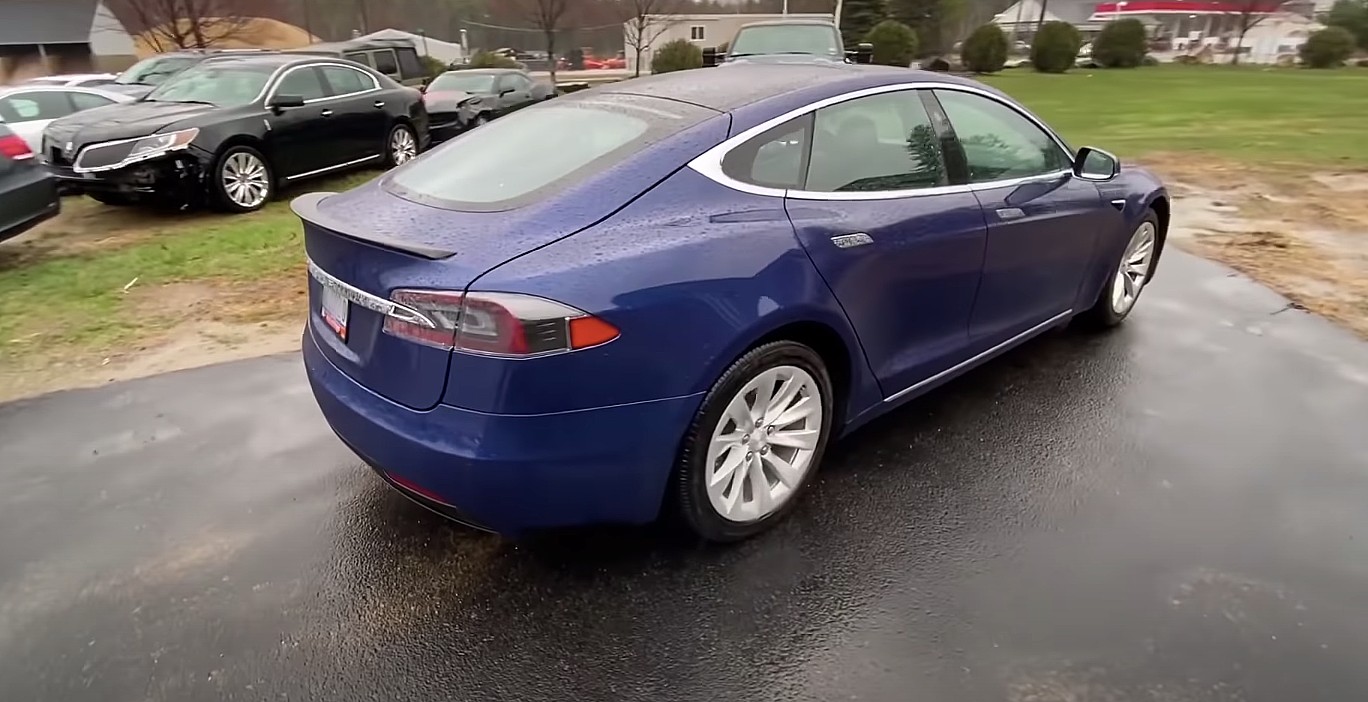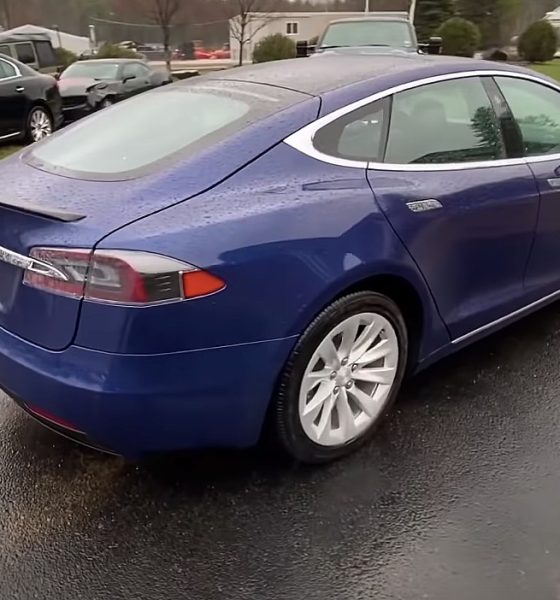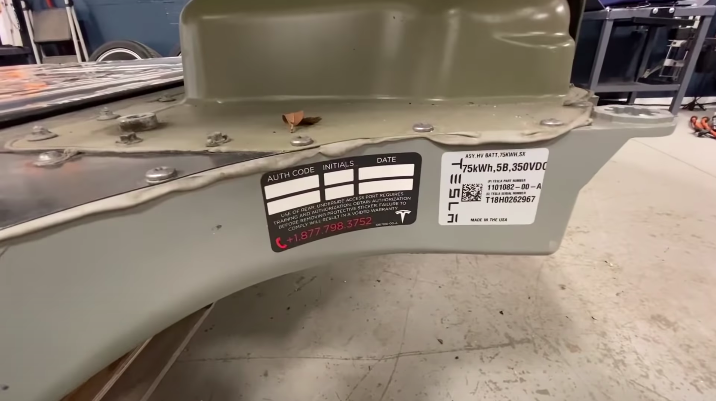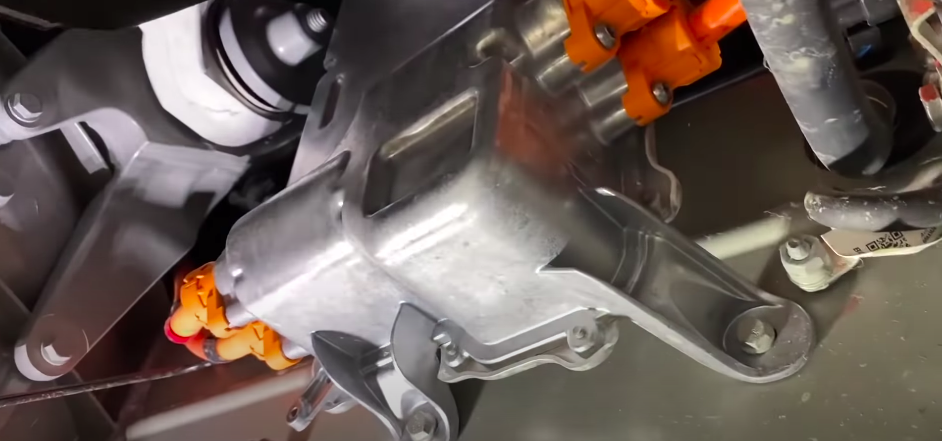

News
Tesla owner converts Model S 75D to P100DL on the cheap with Rich Rebuilds
Tesla owner and automotive enthusiast Rich Rebuilds is known for his crazy vehicle modifications and salvage electric car initiatives. For his most recent project, Rich opted to upgrade a Model S 75D to a P100DL for an owner who wanted a Tesla with more range, power, and speed without buying a whole new car altogether.
The Model S 75D in question belonged to a close friend who was interested in getting a vehicle with better specs and performance. At first, the owner attempted to trade-in his Model S 75D for a P100DL. However, Tesla’s trade-in offer was not up to the owner’s expectations, so he came to Rich for help with the upgrade.
The owner then obtained a P100DL that was involved in an accident for $30,000. Despite the vehicle being totaled, its electric motor and battery were usable. The upgrade process required Rich and the team at the Electrified Garage to remove the 75D’s rear drivetrain and battery, which packs 329 horsepower and an EPA-estimated 259 miles of range.
The first step of the project required the removal of the 75D’s drive unit. The swap was a straightforward step that required the removal of a few nuts and bolts, along with the disconnection of the drivetrain’s coolant tubes and power cables. Then, the removal of the 75 kWh battery pack was next, another relatively easy step.

The removal of the battery pack is not usually necessary for drivetrain replacements. However, for the Model S 75D to be upgraded adequately to a P100DL, the two vehicles’ battery packs needed a swap. The differences between the motors required a replacement of power cables from the motor to the front junction box as well, which sits near the front of the vehicle. According to the Tesla Model S Owners Manual, “The front junction box provides power to various components, such as the Battery heater, the air conditioning compressor and the cabin heater.”
The team ran into a small issue when replacing the rear junction box. The cables from the 75D’s junction box lock into the part, so the Electrified Garage team chose to swap out this junction box with a component from the P100D. Additionally, the Model S 75D’s drivetrain harness was too small to handle the P100D’s motor, so the team had to utilize the performance version’s harness, which required a complete swap out as well.

The cooling systems between the two vehicles were also slightly different and required attention. The 75D’s cooling system only utilized one line and is cooled by oil with a heat exchanger installed. The P100DL’s drive unit, on the other hand, has two coolant lines which connect directly to the motor itself. This step required a small modification from the Electrified Garage team so the vehicle would operate correctly.
After completing the project, the owner took the 75D’s motor and battery, along with the rest of the P100D, and sold them. The project set the owner back only $33,000 in total, including $9,000 in labor costs from the Electrified Garage.
The upgrade in drivetrain and battery pack for the Model S 75D gave ultimately resulted in a Model S P100DL for a vastly reduced price. In the case of Rich’s recent project, the owner was able to obtain more range, speed, and horsepower without spending about $100,000 for a new Model S P100DL.
Watch Rich Rebuilds’ video on the Tesla Model S 75D conversion to a P100D below.

News
Tesla FSD fleet is nearing 7 billion total miles, including 2.5 billion city miles
As can be seen on Tesla’s official FSD webpage, vehicles equipped with the system have now navigated over 6.99 billion miles.

Tesla’s Full Self-Driving (Supervised) fleet is closing in on almost 7 billion total miles driven, as per data posted by the company on its official FSD webpage.
These figures hint at the massive scale of data fueling Tesla’s rapid FSD improvements, which have been quite notable as of late.
FSD mileage milestones
As can be seen on Tesla’s official FSD webpage, vehicles equipped with the system have now navigated over 6.99 billion miles. Tesla owner and avid FSD tester Whole Mars Catalog also shared a screenshot indicating that from the nearly 7 billion miles traveled by the FSD fleet, more than 2.5 billion miles were driven inside cities.
City miles are particularly valuable for complex urban scenarios like unprotected turns, pedestrian interactions, and traffic lights. This is also the difference-maker for FSD, as only complex solutions, such as Waymo’s self-driving taxis, operate similarly on inner-city streets. And even then, incidents such as the San Francisco blackouts have proven challenging for sensor-rich vehicles like Waymos.
Tesla’s data edge
Tesla has a number of advantages in the autonomous vehicle sector, one of which is the size of its fleet and the number of vehicles training FSD on real-world roads. Tesla’s nearly 7 billion FSD miles then allow the company to roll out updates that make its vehicles behave like they are being driven by experienced drivers, even if they are operating on their own.
So notable are Tesla’s improvements to FSD that NVIDIA Director of Robotics Jim Fan, after experiencing FSD v14, noted that the system is the first AI that passes what he described as a “Physical Turing Test.”
“Despite knowing exactly how robot learning works, I still find it magical watching the steering wheel turn by itself. First it feels surreal, next it becomes routine. Then, like the smartphone, taking it away actively hurts. This is how humanity gets rewired and glued to god-like technologies,” Fan wrote in a post on X.
News
Tesla starts showing how FSD will change lives in Europe
Local officials tested the system on narrow country roads and were impressed by FSD’s smooth, human-like driving, with some calling the service a game-changer for everyday life in areas that are far from urban centers.

Tesla has launched Europe’s first public shuttle service using Full Self-Driving (Supervised) in the rural Eifelkreis Bitburg-Prüm region of Germany, demonstrating how the technology can restore independence and mobility for people who struggle with limited transport options.
Local officials tested the system on narrow country roads and were impressed by FSD’s smooth, human-like driving, with some calling the service a game-changer for everyday life in areas that are far from urban centers.
Officials see real impact on rural residents
Arzfeld Mayor Johannes Kuhl and District Administrator Andreas Kruppert personally tested the Tesla shuttle service. This allowed them to see just how well FSD navigated winding lanes and rural roads confidently. Kruppert said, “Autonomous driving sounds like science fiction to many, but we simply see here that it works totally well in rural regions too.” Kuhl, for his part, also noted that FSD “feels like a very experienced driver.”
The pilot complements the area’s “Citizen Bus” program, which provides on-demand rides for elderly residents who can no longer drive themselves. Tesla Europe shared a video of a demonstration of the service, highlighting how FSD gives people their freedom back, even in places where public transport is not as prevalent.
What the Ministry for Economic Affairs and Transport says
Rhineland-Palatinate’s Minister Daniela Schmitt supported the project, praising the collaboration that made this “first of its kind in Europe” possible. As per the ministry, the rural rollout for the service shows FSD’s potential beyond major cities, and it delivers tangible benefits like grocery runs, doctor visits, and social connections for isolated residents.
“Reliable and flexible mobility is especially vital in rural areas. With the launch of a shuttle service using self-driving vehicles (FSD supervised) by Tesla in the Eifelkreis Bitburg-Prüm, an innovative pilot project is now getting underway that complements local community bus services. It is the first project of its kind in Europe.
“The result is a real gain for rural mobility: greater accessibility, more flexibility and tangible benefits for everyday life. A strong signal for innovation, cooperation and future-oriented mobility beyond urban centers,” the ministry wrote in a LinkedIn post.
News
Tesla China quietly posts Robotaxi-related job listing
Tesla China is currently seeking a Low Voltage Electrical Engineer to work on circuit board design for the company’s autonomous vehicles.

Tesla has posted a new job listing in Shanghai explicitly tied to its Robotaxi program, fueling speculation that the company is preparing to launch its dedicated autonomous ride-hailing service in China.
As noted in the listing, Tesla China is currently seeking a Low Voltage Electrical Engineer to work on circuit board design for the company’s autonomous vehicles.
Robotaxi-specific role
The listing, which was shared on social media platform X by industry watcher @tslaming, suggested that Tesla China is looking to fill the role urgently. The job listing itself specifically mentions that the person hired for the role will be working on the Low Voltage Hardware team, which would design the circuit boards that would serve as the nervous system of the Robotaxi.
Key tasks for the role, as indicated in the job listing, include collaboration with PCB layout, firmware, mechanical, program management, and validation teams, among other responsibilities. The role is based in Shanghai.
China Robotaxi launch
China represents a massive potential market for robotaxis, with its dense urban centers and supportive policies in select cities. Tesla has limited permission to roll out FSD in the country, though despite this, its vehicles have been hailed as among the best in the market when it comes to autonomous features. So far, at least, it appears that China supports Tesla’s FSD and Robotaxi rollout.
This was hinted at in November, when Tesla brought the Cybercab to the 8th China International Import Expo (CIIE) in Shanghai, marking the first time that the autonomous two-seater was brought to the Asia-Pacific region. The vehicle, despite not having a release date in China, received a significant amount of interest among the event’s attendees.








